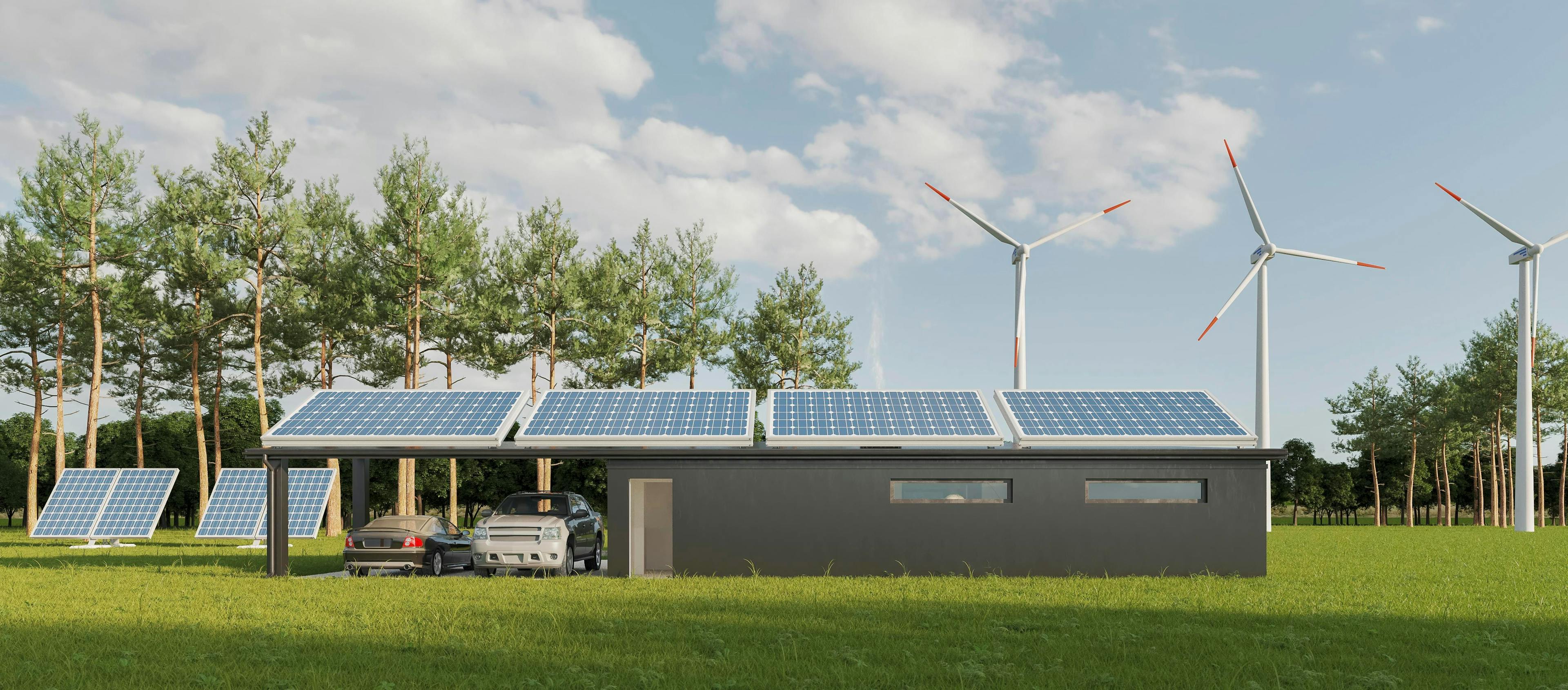Zero Energy Buildings (ZEM) in Malaysia

What are Zero Energy Buildings (ZEM)?
What are ZEBs? Simply put, they're buildings that achieve net-zero energy consumption through a combination of ultra-efficient building design, renewable energy generation, and intelligent control systems.
Think optimized daylighting, high-performance building materials, and clever ventilation strategies working in harmony with rooftop solar panels, wind turbines, and smart sensors.
ZEBs in Malaysia
The country's commitment to green initiatives is paving the way for ZEB adoption. Government initiatives like the Zero Energy Building Facilitation Programme and ambitious targets for carbon neutrality by 2050 are fueling positive momentum.
The Green Energy Office (GEO) in Bangi and Panasonic Green Warehouse in Shah Alam stand as shining examples, achieving over 85% and 75% energy reduction respectively.
Key Considerations for ZEB Design and Construction
1. Energy Efficiency:
- Optimize building orientation to harness natural light and ventilation. Clever shading strategies can significantly reduce cooling demands. Embrace thermal mass to regulate indoor temperatures naturally.
- Choose high-performance insulation materials and airtight construction techniques to minimize energy loss. Invest in energy-efficient windows that maximize daylight while keeping heat at bay.
- Implement daylight harvesting systems and automated controls to adjust lighting based on occupancy and natural light availability.
2. Embracing the Power of Renewables:
- Rooftops become sun-kissed powerhouses with strategically placed solar panels. Analyze solar potential and tilt angles for optimal energy generation. Explore innovative solutions like building-integrated photovoltaics for seamless aesthetics.
- While solar is often the star, consider diversifying your renewable portfolio. Wind turbines can be viable options in suitable locations. Geothermal energy offers untapped potential in specific regions.
- Create localized energy distribution networks within ZEBs. Integrate renewable energy sources with battery storage systems to ensure self-sufficiency and resilience.
3. Building Automation:
- Deploy a network of intelligent sensors that monitor everything from temperature and humidity to occupancy and energy consumption. Real-time data empowers intelligent decision-making.
- Implement advanced building automation systems (BAS) that interpret sensor data and optimize energy usage in real-time. Automate HVAC systems, lighting controls, and hot water management for ultimate efficiency.
- Leverage machine learning and artificial intelligence to analyze energy consumption patterns and predict future needs. This continuous learning optimizes system performance and minimizes energy waste.
ZEBs in Action: Learning from Exemplars
Across Malaysia, pioneering projects are showcasing the diverse potential of ZEBs. Let's embark on a journey to understand how different building types are embracing the net-zero challenge:
1. UniKL Sustainable Energy Living Lab
This soon-to-be-completed academic building in Gombak aims to become Malaysia's first net-zero energy educational institution. Its design principles are a masterclass in energy efficiency:
- Passive Design: Optimized orientation maximizes natural light and ventilation, reducing reliance on artificial lighting and cooling systems.
- Building Envelope: High-performance insulation and airtight construction minimize energy loss.
- Renewable Powerhouse: Integrated solar panels on the roof and facade generate the majority of the building's energy needs.
- Smart Control: Building automation systems optimize energy usage and adjust lighting and temperature based on occupancy and real-time data.
This government office in Bangi was one of the first ZEB prototypes in Malaysia and continues to inspire with its design principles:
- Bioclimatic Design: Optimized building orientation and natural ventilation strategies minimize the need for air conditioning.
- Renewable Energy Pioneer: Early adopter of solar panels, generating over 85% of the building's energy needs.
- Water Recycling: Greywater system treats used water for toilet flushing and irrigation, reducing freshwater consumption.
- Sustainability Advocate: Educational center showcases ZEB technologies and promotes best practices for energy efficiency.
Future Outlook for ZEBs in Malaysia
The future of ZEBs in Malaysia is brimming with optimism. As costs decrease, technologies advance, and public awareness grows, ZEBs are poised to revolutionize the construction landscape.
Imagine a cityscape dotted with buildings generating their own clean energy, slashing carbon emissions, and contributing to a healthier planet. This is the transformative power of ZEBs, and Malaysia is taking a front seat in this green revolution.
Ready to Join the Movement?
At AQ Energy, we believe solar panel installations are the cornerstone of ZEB success. We offer cutting-edge solutions and expert guidance to help you unlock the potential of clean energy in your buildings. Contact us today and let's build a brighter, more sustainable future together.
Remember, ZEBs are not just buildings; they're beacons of innovation, paving the way for a greener future. Be part of the change, embrace the potential, and let's power Malaysia into a sustainable tomorrow, one zero-energy building at a time.
Frequently Asked Questions (FAQs)
A. What is the world's largest zero-energy building?
The Edge in Amsterdam, Netherlands.
B. How many countries have committed to net zero?
Many, including the US, China, and the EU, aim for net-zero carbon emissions by around 2050.
C. What are the disadvantages of net zero?
Challenges may include high costs, changes in infrastructure, economic impacts, and uncertainties about the effectiveness of some technologies.
